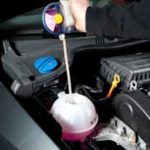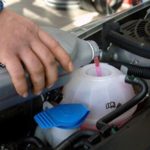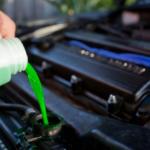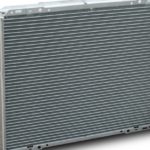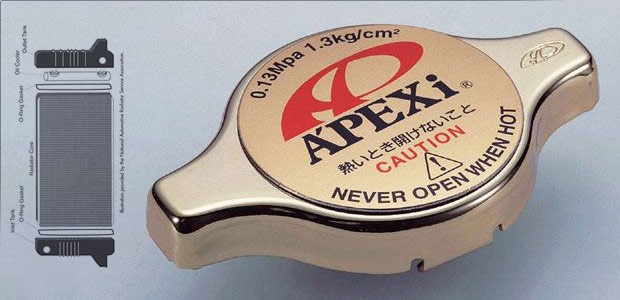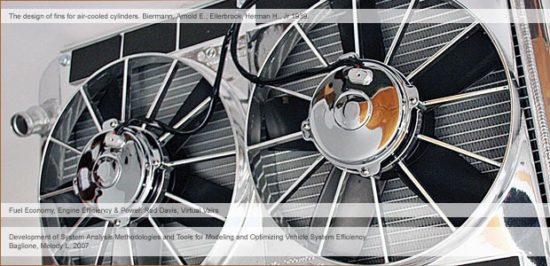Thermostat - Inspection and service of the thermostat saves the engine
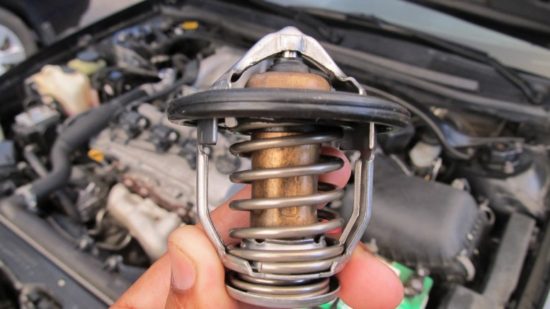
Thermostat
Thermostat - controls cooling and is crucial for reliability and durability
Before we begin the story of one of the most important engine assemblies, the thermostat, it is necessary to clarify the terms. The thermometer measures (indicates) the temperature in a particular system, and the thermostat in question adjusts it. Temperature (warming) is very important for engine operation.
Too low is harmful because too much heat is removed from the work process. This reduces performance and from the same amount of fuel gives the engine less useful work. The environment is proportionally more polluted. The viscosity of the oil increases and circulation resistance increases, the oil pump consumes more labor and further reduces the engine's performance.
Taste landing sliding surfaces are slower, especially in the upper part of the engine, resulting in 'dry friction' and accelerated wear. Similarly, more and more damage to too high temperatures, as the hardness of the material decreases, which increases the wear, the viscosity of the oil film, which bursts and at high temperatures, becomes rapid.
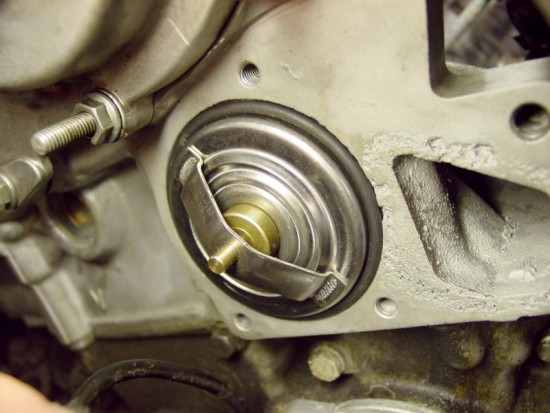
While the engine is cold, the thermostat is closed to allow coolant to flow only through the block and head. So it circulates around the cylinders and does not go into the refrigerator. As it warms up, the thermostat gradually opens and leaks to the refrigerator, and coolant begins to circulate throughout the system, that is, to cool in the refrigerator.
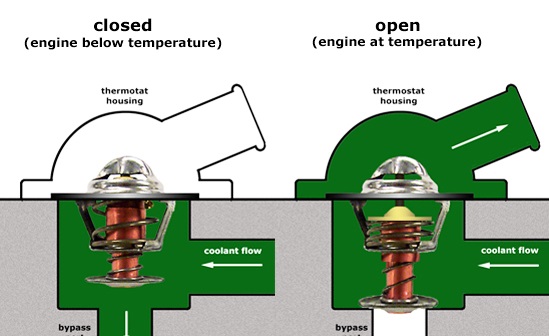
The task of the thermostat is to allow the engine to reach operating temperatures as soon as possible. Therefore, a thermostat is a valve that, depending on the temperature, opens or closes a portion of the circular cooling system and redirects the coolant flow, thus saving fuel and reducing the emission of harmful exhaust gases. In winter, it is also important that the vehicle heating function as soon as possible.
If the thermostat fails, the engine temperature can become too low or too high, and both are harmful. How it works? 'Wax thermostats' are most commonly used, which have a small chamber with a wax-enclosed stretch membrane. By heating the coolant, the wax is also heated in the thermostat.
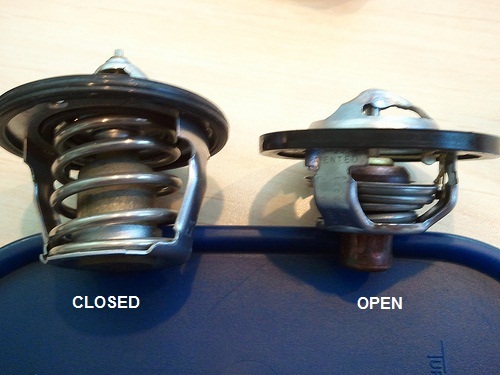
This increases its volume and moves the stretchable membrane, which transmits the force to the pole and moves it, acting towards the spring. The volume of the wax especially increases when it begins to expand at about 80 ° C, creating a force that overcomes the spring and opens the thermostatic valve. After the thermostat opens the passage…
… The coolant is directed towards the radiator. It opens fully between 85 and 95 ° C, depending on the engine load. Since the thermostat loses precision and reliability over time, it is recommended to replace it preventively after 100.000 km or six years, even if everything works correctly, because its malfunction destroys the engine.
The electrically operated thermostat also uses wax, which can be further heated to open the valve faster. When replacing the thermostat, the engine should be completely cooled, because if installed with a significantly cooled coolant, it will lose its working precision.

HOW TO CHECK THE THERMOSTAT THROTTLE?
Place your hand on the rubber hose from the engine to the radiator. If the cold engine starts to heat up quickly, the valve is constantly open. If the coolant outlet hose is cold with the engine warm, the thermostatic valve is permanently blocked in the closed position. Then it must be replaced.
Author: Zeljko Marusic
Source: autoportal.hr
Recommendation of similar texts:

Hi there, I am Mladen and I am an auto enthusiast. I started this blog years ago to help like minded people share information about latest cars, car servicing ideas, used car info, exotic cars, and auto technology. You will find helpful articles and videos on a wide variety of cars - Audi, Mercedes, Toyota, Porsche, Volvo, BMW and much more. Ping us if you have anything cool to share on latest cars or on how to make older cars more efficient, or just want to say hi!



